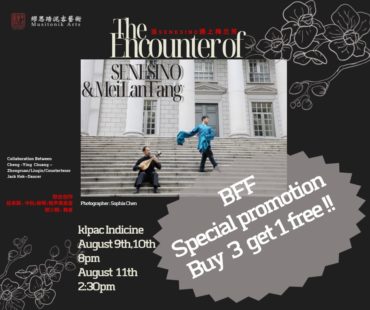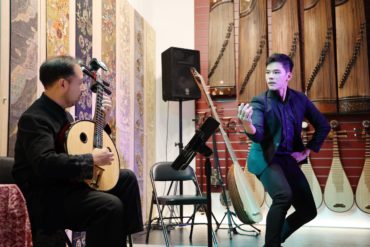
The Encounter of Senesino and Mei Lanfang
It is said that Beijing Opera maestro Mr. Mei Lanfang relied on the hard work instead of the born gifts to interpret the beauty of femininity. His interpretation of Dan-Role (female role) subverted the gender and sublimed the graceful and noble characteristics of female charm. And eventually, he was recognized as the 1st ranking among the Four Great Qiandan (male playing female roles) Actors since early 20th century. During 2nd World War, Maestro Mei refused to perform for the Japanophile government in Shanghai by growing beard and listed as one of the anti-Japanese heroes. Although Master Mei is a Qiandan, he perfectly embodies the characteristics of Qian (masculine) and Kun (feminine) at crucial moments in his life.
Senesino’s art was shaped along with the cruel music history of castrati being consecrated to the religion, but he developed a superb singing voice and broke away from the church to conquer the world of the newly emerged music genre “opera” during the European Baroque period. The remuneration of premiering several leading roles in London opera productions by composer G. F. Handel was once the ceiling among performing musicians in the European music history, and marked a glorious milestone for Baroque vocal music. Transcending the limitations of the vocal range of the human body, castrato singers cross the vocal limits of gender, in another word, they combined the characteristics of both genders to heal the humanity with their voice.
The shackles of the old eras set the limits to human body’s possibility in gender expression. Could we set a contemporary dialogue between voice and body across time and space in our time by wandering in between the boundaries of the art fields, and expanding our horizon into a broader imagination?
In this production, Malaysian dancer Jack Kek will perform a set of culturally integrated choreography on music drawn from multicultural elements. Focusing on the point of departure in combining movement qualities of female and male, he wanders in dance categories embodied within him (Southeast Asian traditional dance, Chinese classical dance, modern dance, etc.), shuttling between yin and yang, femininity and masculinity, virtual and real.
On the other hand, driven by the background of multicultural integration, Taiwanese intercultural troubadour Cheng-Ying Chuang not only plays nostagic and exotic sounds with Chinese lutes (zhongruan & liuqin), but also sings songs in diverse cultures with his countertenor voice to resonate with the audience. The encounter between these two artists led to this trans-national co-production, using sound and body as the media to memerize the audience with nostalgia and exoticism, and embarks a theatrical journey through time and space.
Programme elements in Music and [Dance]:
- Timang Burung (Malaysian “Joget Gamelan” was developed under The 19th-century Riau-Lingga empire from Java to Terengganu. This is a traditional Joget Gamelan piece remix with zhongruan Chinese lute) + [Variations of Southeast Asian Dance Styles]
- Chinese ancient styles improv on zhongruan + [Chinese Martial art, Taiji Dauyin influenced masculinity movement]
- Free improvisation music (contemporary extended techniques) + [Improvisation Movement]
- Greensleeves (ground bass on looper with zhongruan melodies from historical notation “The Division Flute” by John Walsh published in 1706 and live improvisation, and Tudor English air on countertenor/zhongruan) + [Contemporary Dance by using contemporary movement with Water-Sleeves]
- Ode of Ewha (The theme song from new libretto/orchestra composition of Mei Style Beijing Opera production ”Royal Concubine Yang of the Tang Dynasty”, music by Nailin Yang, lyrics by Sizai Wong. Premiered by Mei Baojiu, Mei Lanfang’s son, in Shanghai in 2003. C.-Y. Chuang arr. for countertenor, Chinese lute “liuqin” solo and Chinese lutes ensemble) + [Traditional QianDan Water-Sleeves Dance]
- Flow, my tears (by John Dowland. An English lute song selected from ”The Second Booke of Songs or Ayres” published in London in 1600. Performed on countertenor and zhongruan) + [Water-Sleeves Dance Variation]
- Ombra mai fu (aria from G. F. Handel’s opera “Xerse”). Performed on countertenor, zhongruan and pre-recorded plucked-string ensemble) + [Contemporary dance]




